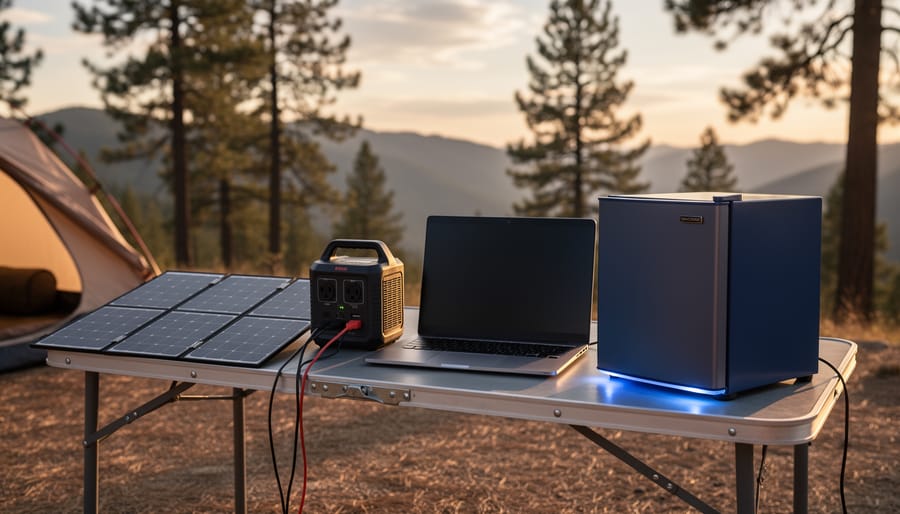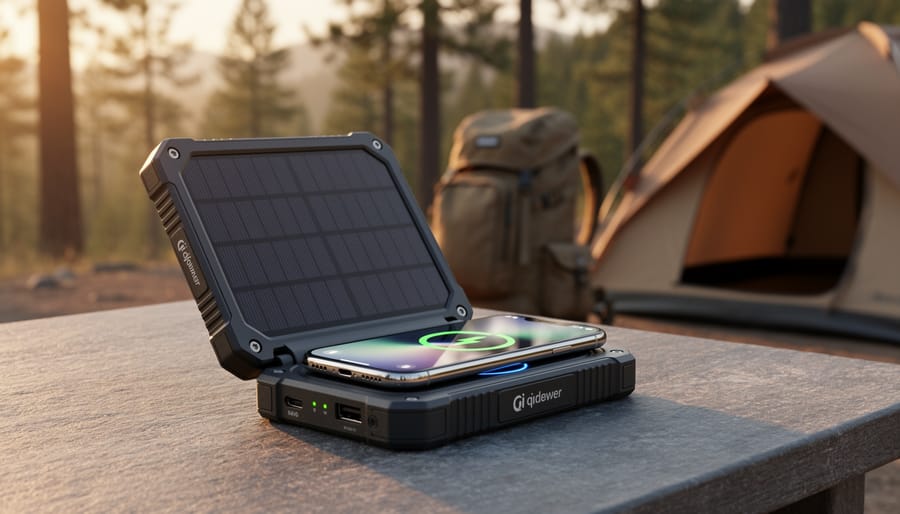Do I Need a Surge Protector with a Generator
Updated:

As valuable as generators are, they come with their challenges and potential risks, such as power fluctuations that lead to surges capable of damaging devices. To safeguard your valuable electronics and ensure the longevity of your generator, a surge protector becomes an essential accessory.
This article will discuss why generators can cause surges, examine different generator and surge protector types, provide tips for choosing the suitable surge protector, and overview alternatives to traditional surge protectors.
By the end, you will have a comprehensive look at best practices for surge protection when utilizing a generator.
Can a Generator Cause a Power Surge?
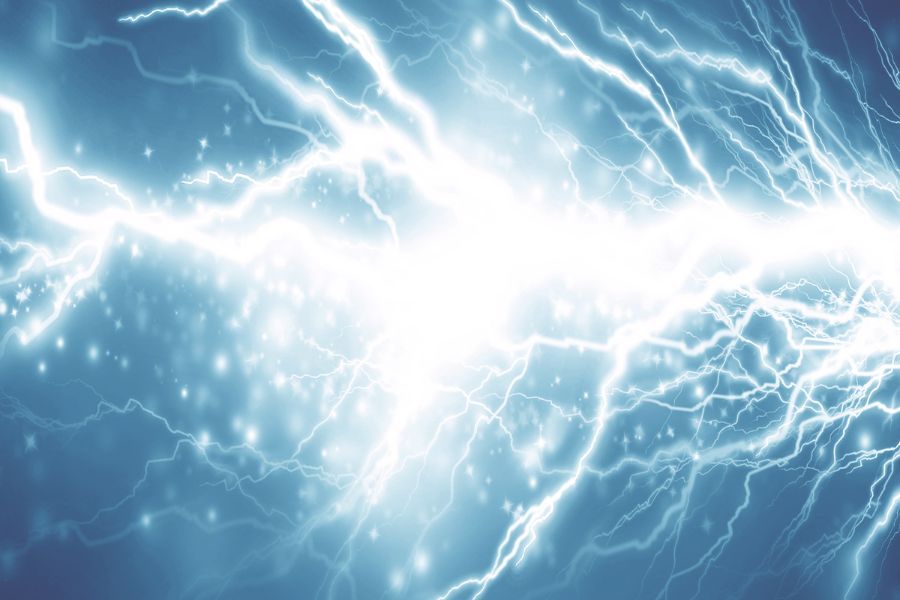
A power surge represents a temporary spike in voltage or current. Even brief surges can potentially damage electronic devices.
Many factors can cause power surges, including:
- Lightning strikes
- Problems with the electrical grid
- Issues with generators
- Defects in electrical systems
What Happens During a Power Surge
Experiencing generator power surges in your home can be alarming. The excess voltage or current can cause lights to flicker or buzz. In more severe cases, power surges can even cause visible damage to your appliances.
In the United States, most outlets operate at 120 volts. A power surge can increase this to 170 volts or more, even if only for a split second. This brief power spike alone can inflict severe damage on your electronics.
Can Generators Specifically Cause Power Surges?
Let’s now move to the central question: can a generator cause a power surge?
Yes, generators can cause surges, though rarely. Many generators have built-in electrical systems to prevent surges.
When discussing power surges in a generator-powered electrical system, the type of generator is a significant factor.
Power Surges in Different Types of Generators
The chance of a surge also heavily depends on the kind of generator you are using. Here is a quick breakdown:
- Conventional Generators: These generators run at a constant speed, usually around 3600 RPM. This can lead to small voltage spikes and drops. These fluctuations, though generally not significant, could potentially harm sensitive gadgets.
- Inverter Generators: An inverter generator is a pure sine wave generator that adjusts the power it generates according to the demand, reducing the likelihood of surges.
- Solar Generators: Like inverter generators, solar generators have a built-in inverter that converts DC electricity stored in the batteries to AC electricity that connected appliances can use. This reduces the risk of electricity surges.
Do You Need a Surge Protector with Your Solar Generator?
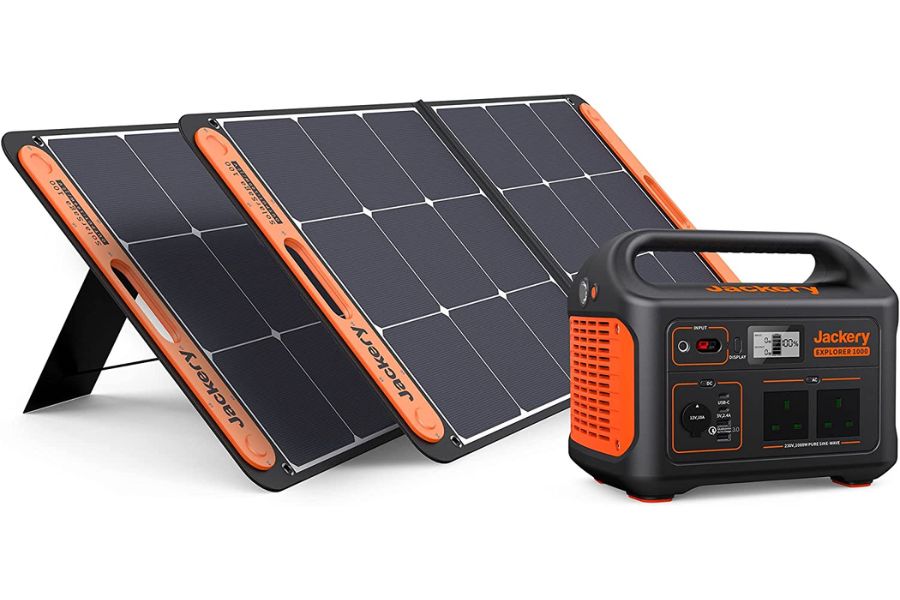
Solar generators, like any other electronic equipment, can benefit from surge protectors. A surge protector can help safeguard the generator from voltage spikes or power surges that could damage the electronic components.
Various events, such as lightning strikes, power outages, or equipment failure on the power grid, could cause these surges.
However, not all solar generators are designed similarly; some may already have built-in surge protection.
It’s also worth noting that a surge protector alone may not provide complete protection against all types of electrical issues. For example, it won’t protect against direct lightning strikes, and it may not protect against long-lasting overvoltage events.
It’s best to refer to the user manual or contact the manufacturer of your specific solar generator to understand its particular needs and protections. Besides, a qualified electrician can provide advice tailored to your particular setup and local conditions.
Compliance with Safety Guidelines for Surge Protection
It’s important to highlight that recent safety guidelines have made surge protection a requirement for generator installations. This helps ensure compliance with updated requirements and provides extra safety for your appliances and electronics.
For instance, the 2020 NEC electrical code necessitates surge protectors for all new dwellings to protect electrical equipment.
How to Choose the Right Surge Protector for Your Needs?
When selecting the best surge protector to use with your solar generator, there are several key factors to consider:
Clamping Voltage
The clamping voltage is the threshold the surge protector will activate to divert excess electricity. Lower clamping voltages provide faster response times and better protection.
Joule Rating
The joule rating indicates how much energy the surge protector can absorb before failure.
Since generators can produce powerful surges, especially in case of a lightning strike, choose a surge protector with a high joule rating to withstand the maximum surge current.
Number of Outlets
Ensure the surge protector has enough outlets to connect all the devices and appliances to the generator you need to power from the generator.
It’s better to have some extra outlets than not enough.
Cord Length
Measure the distance from where the generator will be placed to where you need to run cords, and choose a surge protector with a long enough extension cord to span the space. Look for at least a 10-15 foot cord.
Indicator Lights
Surge protectors with indicator lights to notify you when the protector has stopped functioning due to absorbing too many surges are extremely helpful. This lets you replace the surge protector directly before the next surge hits.
UL Rating
Choose a surge protector tested and certified by Underwriters Laboratories (UL) to ensure it meets safety and performance standards. Avoid protectors without a UL rating.
How Do Surge Protectors Work?
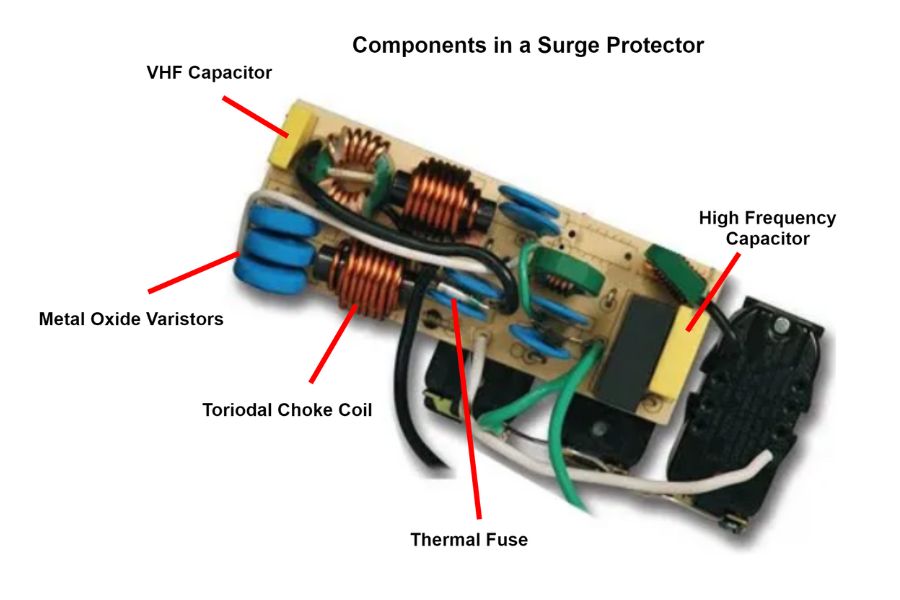
Ever wonder how a surge protector guards your generator and appliances against those uninvited power spikes? Let’s shed some light on the basic principles that drive these essential electrical devices.
Role of Metal Oxide Varistors (MOVs)
The most significant part of a surge protector is a component called a Metal Oxide Varistor (MOV). The MOV stays inactive during regular voltage levels, becoming an invisible circuit part.
The actual value of the MOV becomes apparent when a surge happens.
Reacting to a Surge
When a power surge occurs, the voltage increase triggers the MOV. The MOV responds to excess power by changing its resistance drastically.
In practical terms, it becomes a channel for excess voltage, directing it away from your appliances and toward the ground wire.
Safe Disposal of Surges
By diverting the surplus voltage to the ground wire, the surge protector stops the surge from the power lines from reaching your appliances.
This quick and efficient operation protects your devices from potential damage caused by high voltage levels.
Damage and Failure of Surge Protectors
Remember, surge protectors aren’t designed to last for very long. As they handle a surge, they bear the full force of the excessive power, which can wear down their internal parts over time.
A powerful surge can significantly affect a surge protector, reducing its efficiency or taking it out of the game entirely.
Alternatives to Surge Protectors for Protecting Your Appliances
A surge protector is not the only option for protecting your electronics from power surges when using a generator. Let’s discuss some other effective options for surge protection.
Combining these alternatives with surge protectors provides the best protection from surges when using a generator.
Use a Surge Arrester
A surge arrester is a whole-house device that protects from power surges. Surge arresters are installed at the electrical service panel of your home or RV by an electrician.
They can absorb up to 90% of a power surge. For complete protection, use surge arresters along with plug-in surge protectors.
Use an Uninterruptible Power Supply (UPS)
A UPS provides backup power from a battery when electricity fails. It allows the safe shutdown of electronics.
Choose a UPS with generator mode to handle power fluctuations. Use dedicated UPS units for sensitive electronics rather than one large UPS. Opt for a double-conversion UPS that provides very stable power.
Some advanced solar generators also act like traditional UPS and provide the same level of protection as a conventional UPS.
Use a Power Line Conditioner
These devices filter electrical noise and stabilize power. They can eliminate surges and inconsistencies from generators.
Power line conditioners may be the only protection needed for electronics.
FAQs
What Are the Differences between a Power Surge and a Power Outage?
A power outage is a total loss of electricity caused by an interruption in the power supply from the power transmission network. It results in devices abruptly shutting down.
A power surge, on the other hand, is a brief spike in voltage that exposes devices to excess electricity. This can potentially damage devices that aren’t designed to handle the surge in power. While an outage cuts off power, a surge overloads it.
Can a Surge Protector Protect Against a Lightning Strike?
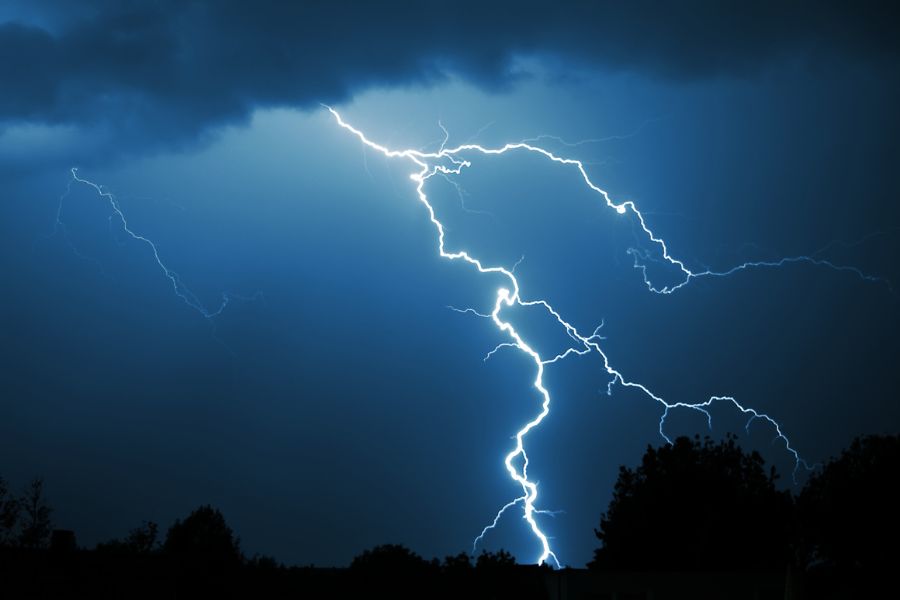
A standard surge protector alone cannot fully protect against a direct lightning strike. The massive power spike due to a lightning strike is too much for most surge protectors to absorb safely.
While surge protectors may provide some protection by diverting some excess energy, they cannot prevent damage from the full force of a direct strike.
A whole-house surge arrester or other dedicated lightning protection system grounded to the earth is required for complete lightning protection.
Can I Use a Surge Protector With My Outdoor Generator?
You can use a surge protector with your outdoor generator, but it’s crucial to ensure the protector is weatherproof, grounded correctly, and compatible with the power output of your generator.
Is a Surge Protector Different From a Power Strip?
Yes, a surge protector is different from a power strip. While many surge protectors do come in the form of a power strip, there are key differences:
- Purpose: A power strip provides more outlets to plug in devices. A surge protector actively protects devices from power surges.
- Protection: Power strips do not provide any surge protection. Surge protectors use internal circuitry to divert excess electricity away from connected devices.
- Safety: When power surges occur, a surge protector prevents potential damage, while a power strip does nothing to safeguard devices.
- Features: Surge protectors have joule ratings indicating their protective capabilities and warning lights to indicate if protection is still active. Power strips lack these.
- Cost: Surge protectors cost more than power strips due to their added protective circuitry.




